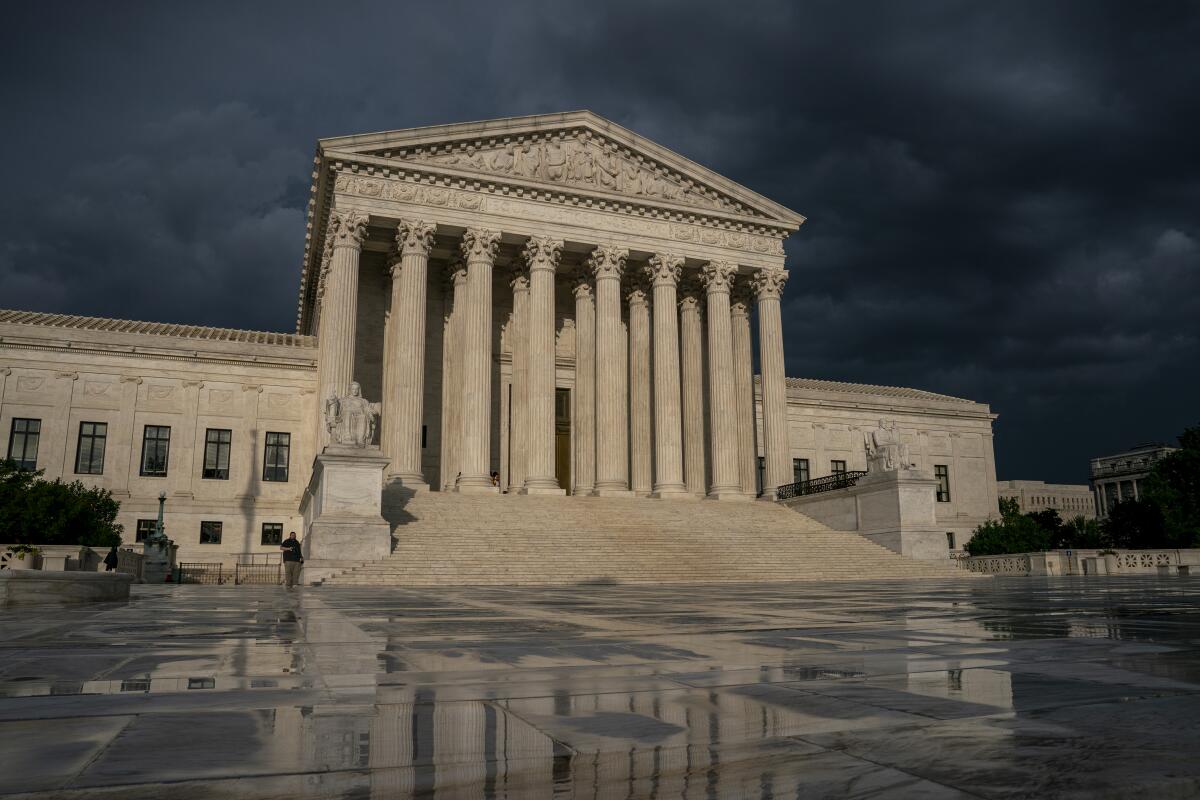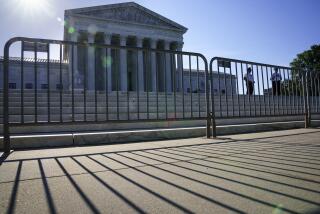Op-Ed: The Supreme Court’s conservatives now have free rein. Here’s how your rights will change

- Share via
The Supreme Court term, which begins Monday, will be the culmination of five decades of efforts by conservatives to seize control of the court.
It started when Richard Nixon ran for president in 1968 by campaigning against the liberal Warren Court and promising to fill the bench with strict constructionists. It continued with Ronald Reagan openly seeking to move the courts far to the right. And it concluded with Donald Trump picking three of the most conservative judges in the country for the Supreme Court.
This will be the first full term with five staunch conservatives: Clarence Thomas, Samuel A. Alito Jr., Neil M. Gorsuch, Brett M. Kavanaugh and Amy Coney Barrett. Not surprisingly, they have filled the docket with cases with which they could alter constitutional rights in many different fields.
The court’s most watched case — Dobbs vs. Jackson Women’s Health Organization, to be argued on Dec. 1 — could dismantle principles of abortion rights set in 1973. The justices will consider a Mississippi law that prohibits abortions after the 15th week of pregnancy, in defiance of Roe vs. Wade, which held that states cannot prohibit abortions before viability, around the 24th week of pregnancy. If the court allows a state to bar the procedure at 15 weeks, there is no reason why abortions cannot be outlawed at even earlier points in pregnancy — such as the Texas law that prohibits abortions after the sixth week of pregnancy or even an Alabama law that bans all abortions.
Another area the court will reopen for consideration is gun rights. From 1791, when the 2nd Amendment was ratified, until 2008, not one federal, state or local gun regulation was struck down. But the court in 2008 declared unconstitutional a Washington, D.C., ordinance that prohibited private ownership or possession of handguns. The 5-4 opinion in District of Columbia vs. Heller, written by Justice Antonin Scalia, said that the 2nd Amendment protects a right to have guns in the home for the sake of security.
This term, the court could expand gun rights beyond the landmark Heller case. In New York Rifle & Pistol Assn. vs. Bruen, to be argued on Nov. 2, the justices will consider the constitutionality of a New York statute that requires a person seeking a permit to carry a concealed weapon outside the home show a need to do so for self-defense. The five most conservative justices — in their opinions in Supreme Court cases or as appellate judges — have expressed strong support for limiting government regulation of firearms. In the New York case, the question is how far the court will go in this direction.
Similarly, the court’s conservatives could push interpretations of 1st Amendment religious clauses further right. For decades, most religious rights lawsuits involved the question of when a government may give aid to religious schools without such aid being an impermissible establishment of religion. The cases were typically about whether the government could choose to provide religious schools things such as sign language interpreters, buses for field trips, textbooks and audiovisual equipment.
In recent years, the question has shifted to when the government must provide assistance to religious schools — with failure to do so violating the Constitution. In 2017, for example, the court said that a state violated the 1st Amendment’s free exercise of religion clause when it provided funds to surface playgrounds to secular private schools, but not religious schools.
A case this year, Carson vs. Makin, to be argued Dec. 8, raises this issue even more broadly. It involves areas of Maine that are too sparsely populated to support public schools. The state government, through school administrative units, provides parents funds to send their children to private schools but the money cannot be used for religious schools. The issue is whether the government’s refusal to pay for religious school tuition is unconstitutional. The court is likely to say yes, further opening the door to using taxpayer money to finance religious education.
Only about half the docket for this term is currently set, with review of more cases to be granted in coming months. One important issue I expect the court to take up is affirmative action. The case most likely to be heard is Students for Fair Admissions vs. Harvard, which challenges Harvard’s criteria for undergraduate admissions. The plaintiffs claim that Harvard’s method discriminates against Asian American applicants and suppresses their numbers. The lower federal courts have all concluded that Harvard’s admissions approach does not violate federal civil rights laws.
The last affirmative action case decided by the court, Fisher vs. University of Texas at Austin, in 2016, upheld the use of race as one factor in admissions decisions to enhance diversity. But Justices Anthony Kennedy and Ruth Bader Ginsburg were in the majority in that case. Their replacements are part of a six-member conservative majority that seeks to eliminate consideration of race and all affirmative action in college admissions.
There is an ideological divide in society about affirmative action, as there is on abortion, gun rights and taxpayer aid to religious schools. The court’s conservative majority is now poised to reshape constitutional rights and protections in ways this nation has not seen in generations.
Erwin Chemerinsky is dean of the UC Berkeley School of Law and a contributing writer to Opinion. He is the author most recently of “Presumed Guilty: How the Supreme Court Empowered the Police and Subverted Civil Rights.”
More to Read
A cure for the common opinion
Get thought-provoking perspectives with our weekly newsletter.
You may occasionally receive promotional content from the Los Angeles Times.










